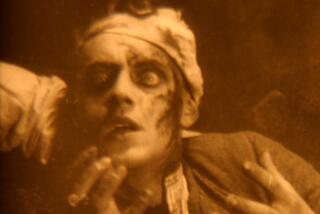Combative cartoons
- Share via
Few Americans now remember the vast political battles that divided the United States during World War II. We look back in a patriotic haze at a nation that seemed united but was, in fact, as divided as it is today.
A decade ago, the book “Dr. Seuss Goes to War” showed that Theodor Seuss Geisel, in addition to his many children’s books, was a very engaged political cartoonist during the war years. His cartoons lambasted the American isolationists and then the Axis foes daily, from 1940 to 1943, in PM, the radical New York tabloid.
Until Japan’s attack on Pearl Harbor in 1941, many of the country’s Republicans were adamantly opposed to any intervention to help the Allies. (Some, such as Charles Lindbergh, the heroic aviator, even thought the Germans were bound to win and shouldn’t be antagonized. Seuss relentlessly attacked him and others who were unwilling to admit that the United States was endangered.)
But Seuss was far from the only noted artist working for PM. The forthcoming “Dr. Seuss & Co. Go to War” offers the work of many others who became famous in the New Yorker magazine and elsewhere. Along with columnists such as I.F. Stone and Max Lerner, they pointedly showed the concerns of the American left before and during the war.
The biggest surprise in the new compilation is the nearly 50 cartoons by artist Saul Steinberg -- he of the famous cover for the New Yorker showing the rest of the United States seen from Manhattan.
Steinberg had been drafted into the Office of Strategic Services, the CIA’s predecessor. His talents were soon recognized, and he was asked to draw cartoons for the newspaper that the OSS sent into Germany. Making fun of Hitler was unthinkable and highly dangerous in Nazi Germany. Steinberg’s cartoons, published in the new book -- amazingly for the first time in the United States -- show his brilliant satire and political insights.
When we look at the hundreds of cartoons by Seuss and others, along with the PM’s editorial comments, we’re brought back to another era of American life. The right opposed President Franklin Roosevelt’s attempts to limit prices and profit; the left, as shown in PM’s pages, backed labor and fought against the racism that still was a major force. The battles over the country’s war aims added to these domestic issues, a situation not unlike today’s strident debates.
Unfortunately, we no longer have PM’s brilliant cartoonists to help us laugh at them.
More to Read
Sign up for our Book Club newsletter
Get the latest news, events and more from the Los Angeles Times Book Club, and help us get L.A. reading and talking.
You may occasionally receive promotional content from the Los Angeles Times.









